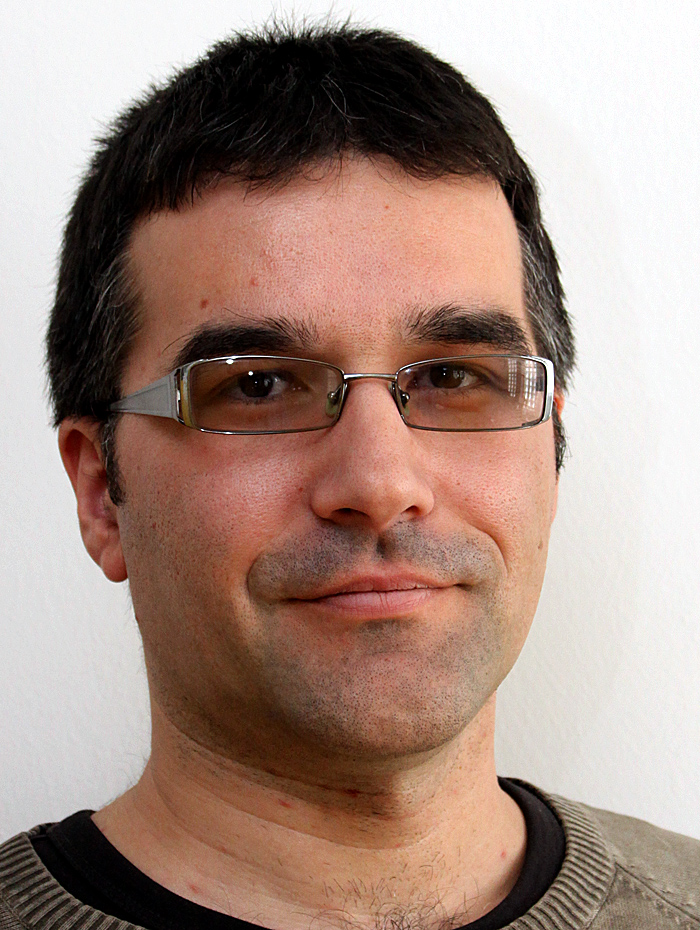Modern Trends in Chemical Graph Theory is a joint project of the Slovenian Research Agency and the Serbian Ministry of Education, Science and Technological Development as part of bilateral cooperation between these two countries (2020-2021)
Duration: January 2020-December 2021
Project number: 337-00-21/2020-09/28
Institutions:
From Slovenia:
the Faculty of Information Studies (Novo Mesto), the Faculty of Mathematics and Physics (Ljubljana), and the Faculty of Mathematics, Natural Sciences and Information Technology (Koper)
From Serbia:
SANU Mathematical Institute (Belgrade), the Faculty of Natural Sciences and Mathematics (Kragujevac), and the Faculty of Natural Sciences and Mathematics (Niš)
Project coordinators:
- Darko Dimitrov, the Faculty of Information Studies, Novo Mesto, Slovenia (e-mail: darko.dimitrov11@gmail.com)
- Dragan Stevanović, SANU Mathematical Institute, 36 Kneza Mihaila Str. 11000 Belgrade, Serbia (e-mail: dragan_stevanovic@mi.sanu.ac.rs)
Other project members:
From
Slovenia:
- Riste Škrekovski, the Faculty of Mathematics and Physics, University of Ljubljana
- Aleksandra Tepeh, the Faculty of Information Studies, Novo Mesto
- Martin Knor, the Faculty of Information Studies, Novo Mesto
- Barbara Ikica, the Faculty of Mathematics and Physics, University of Ljubljana
- Slobodan Filipovski, the Faculty of Mathematics, Natural Sciences and Information Technology, University of Primorska
From
Serbia:
- Boris Furtula, the Faculty of Natural Sciences and Mathematics, University of Kragujevac
- Sanja Stevanović, SANU Mathematical Institute, Belgrade
- Izudin Redžepović, the Faculty of Natural Sciences and Mathematics, University of Kragujevac
- Slađana Đorđević, the Faculty of Natural Sciences and Mathematics, University of Kragujevac
- Nikola Milosavljević, the Faculty of Natural Sciences and Mathematics, University of Niš
Project description:
The proposed project belongs to chemical graph theory, an interplay between theoretical chemistry and graph theory, whose main goals are to correlate the physical and chemical properties of molecules with numerical topological indices of their associated molecular graphs and to characterise molecular graphs that have desirable properties of these topological indices. The obtained correlations form a quantitative structure-activity relationship (QSAR) and quantitative structure-property relationship (QSPR) models in which biological, pharmacological, medical, ecological and other properties of molecules are predicted from their molecular structure. QSAR and QSPR models make it possible to save time and money by narrowing the search for a proper medicine to compounds with desirable properties of their molecular graphs by using solely computational resources prior to the actual synthetisation of a few candidate compounds. Harry Wiener did the seminal work in this direction in 1947, when he showed that the boiling point of paraffin is strongly correlated to the sum of distances between all pairs of vertices in its molecular graph (now called the Wiener index), and many important topological indices have been proposed since then.
One of the more recent topological indices is the atom-bond connectivity (ABC) index, proposed by Ernesto Estrada in 1998, which represents a sum over all edges in a molecular graph of particular terms that depend on degrees of edge vertices. In 2008, Estrada showed that the ABC index correlates well with the heat of formation of alkanes, and provided a quantum-chemical explanation for this correlation based on the ratio of 1.3-interactions with respect to the total number of 1.2-, 1.3- and 1.4- interactions in alkanes, concluding that their heat of formation can be obtained as a combination of stabilising effects coming from atoms, bonds and protobranches. In a subsequent critical evaluation, Ivan Gutman et al. [Indian J. Chem. Sect. A: Inorg. Phys. Theor. Anal. 51, 690–694 (2012)] confirmed that the ABC index “reproduces the heat of formation with an accuracy comparable to that of high level ab initio and DFT (MP2, B3LYP) quantum chemical calculations”, claiming that “a theoretical, quantum-theory-based foundation and justification has been found” for this descriptive capacity of the ABC index.
Within the framework of this project, we aim to study the graph theoretical properties of topological indices such as the Wiener index and the ABC index. The ABC index triggered a series of mathematical papers arising from difficulties in characterising graphs and trees with the minimum ABC index, making it one of the most difficult recent open problems in mathematical chemistry. Another problem that does not allow easy derivation of extremal graphs is to characterise graphs and trees with maximum Wiener index among those with given diameter and radius. Such problems were first studied by Plesnik in 1984 and to this day only a few further results were obtained, with the most important one being the result of Mukwembi and Vetrik [Bull. Aust. Math. Soc. 89, 379-396 (2014)] in which upper bounds on Wiener index of trees with diameter at most six have been obtained and extremal trees characterised. In addition to our goals to make further progress on these two research problems, we will work on other properties of these and similar topological indices as well, which may also include establishing relations between distance and degree based topological indices of molecular graphs and spectral properties of their associated matrices that team leaders started jointly in [MATCH Commun. Math. Comput. Chem. 72, 741-751 (2014)].
Gallery

Project Leader: Dr Darko Dimitrov (Slovenia) (Courtesy of Darko Dimitrov)

Project Leader: Dr Dragan Stevanović (Serbia) (Courtesy of Dragan Stevanović (photo by Pavel Ficur))


